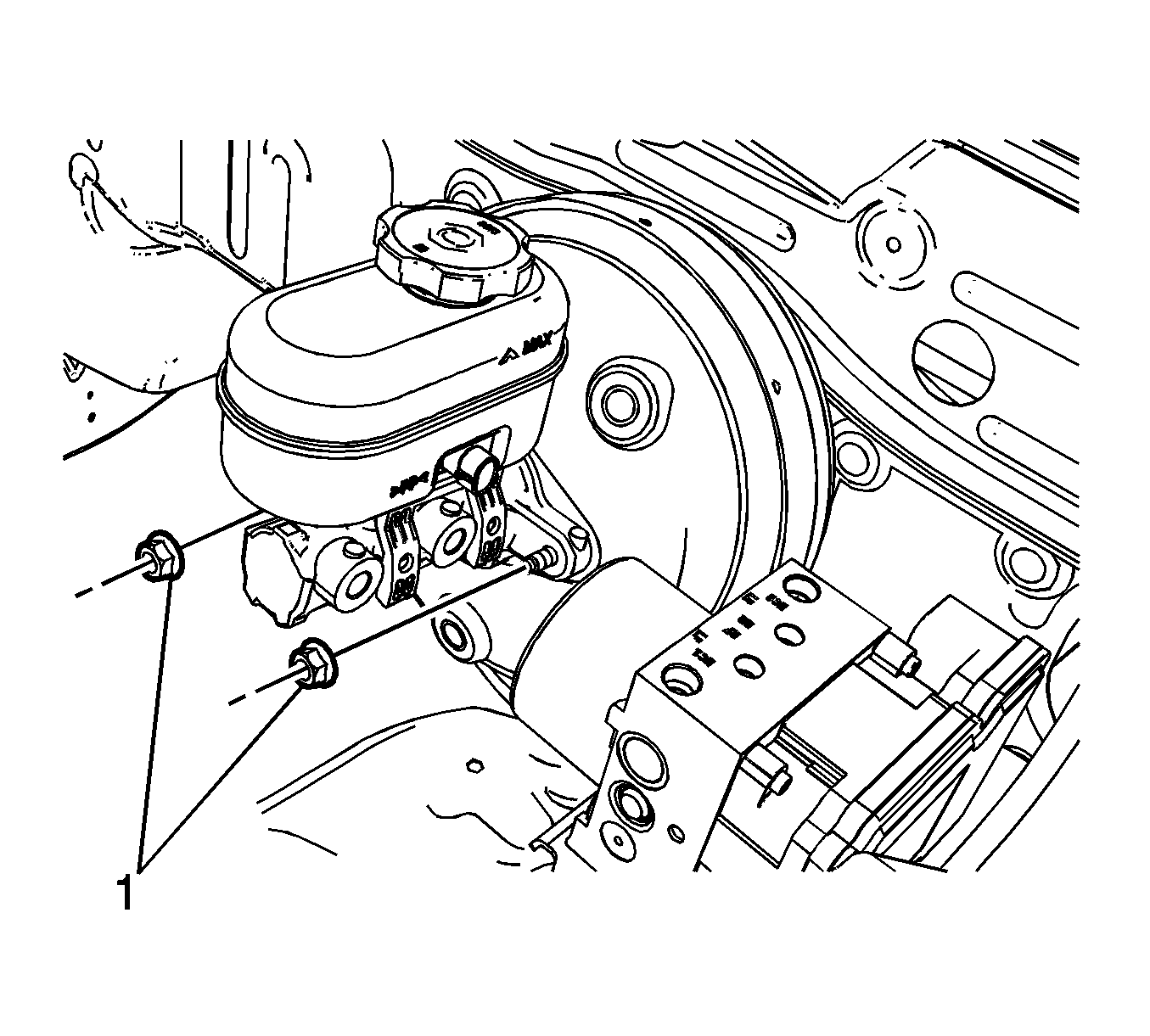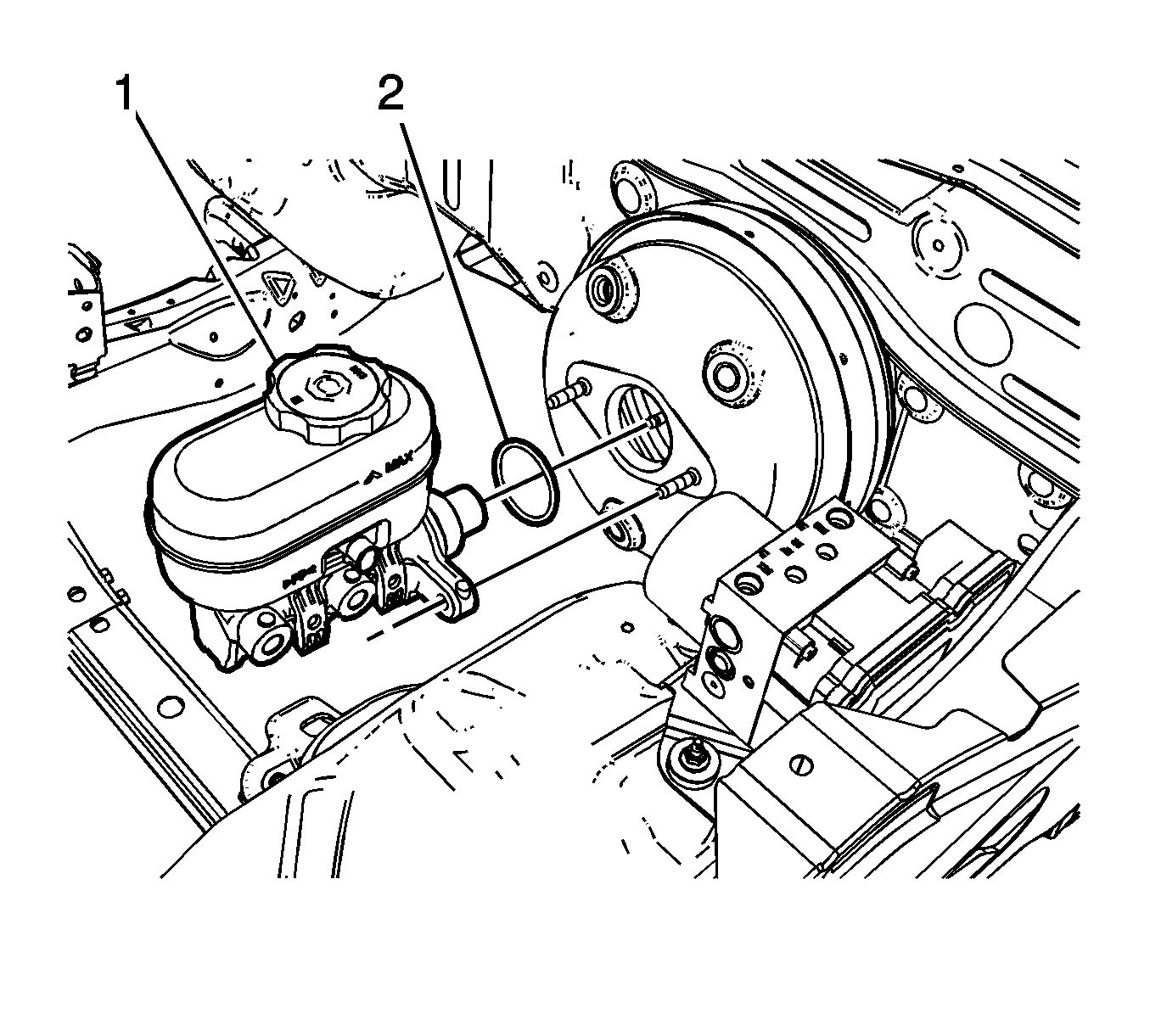For 1990-2009 cars only
Removal Procedure
Warning: Refer to Brake Fluid Irritant Warning in the Preface section.
- Apply and release the brake pedal several times until the pedal becomes firm to deplete the power vacuum brake booster vacuum reserve.
- Using a suitable tool, remove and properly discard the brake fluid from the master cylinder reservoir.
- Clean the master cylinder assembly with denatured alcohol to remove any accumulated dirt and debris and allow to dry.
- Disconnect the brake fluid level indicator switch electrical connector.
- Disconnect the master cylinder secondary brake pipe fitting (1).
- Disconnect the master cylinder primary brake pipe fitting (1).
- Remove the master cylinder nuts (1).
- Remove the master cylinder (1) and O-ring seal (2) from the power vacuum brake booster.

Cap the brake pipe fitting and plug the master cylinder outlet port to prevent brake fluid loss and contamination.

Cap the brake pipe fitting and plug the master cylinder outlet port to prevent brake fluid loss and contamination.


Inspect the O-ring seal for damage and replace, if necessary.
Installation Procedure
- If installing a new master cylinder, bench bleed the master cylinder. Refer to Master Cylinder Bench Bleeding.
- Install the master cylinder (1) and O-ring seal (2) to the power vacuum brake booster.
- Install the master cylinder nuts (1) and tighten to 30 N·m (22 lb ft).
- Connect the master cylinder primary brake pipe fitting (1) and tighten to 17 N·m (13 lb ft).
- Connect the master cylinder secondary brake pipe fitting (1) and tighten to 17 N·m (13 lb ft).
- Connect the brake fluid level indicator switch electrical connector.
- Fill the master cylinder reservoir with the recommended brake fluid. Refer to Master Cylinder Reservoir Filling.
- Bleed the hydraulic brake system. Refer to Hydraulic Brake System Bleeding.

Ensure the O-ring seal is properly positioned in the groove in the master cylinder body.
Caution: Refer to Fastener Caution in the Preface section.



